Reading the Collections, Week 18: Student Reminiscences
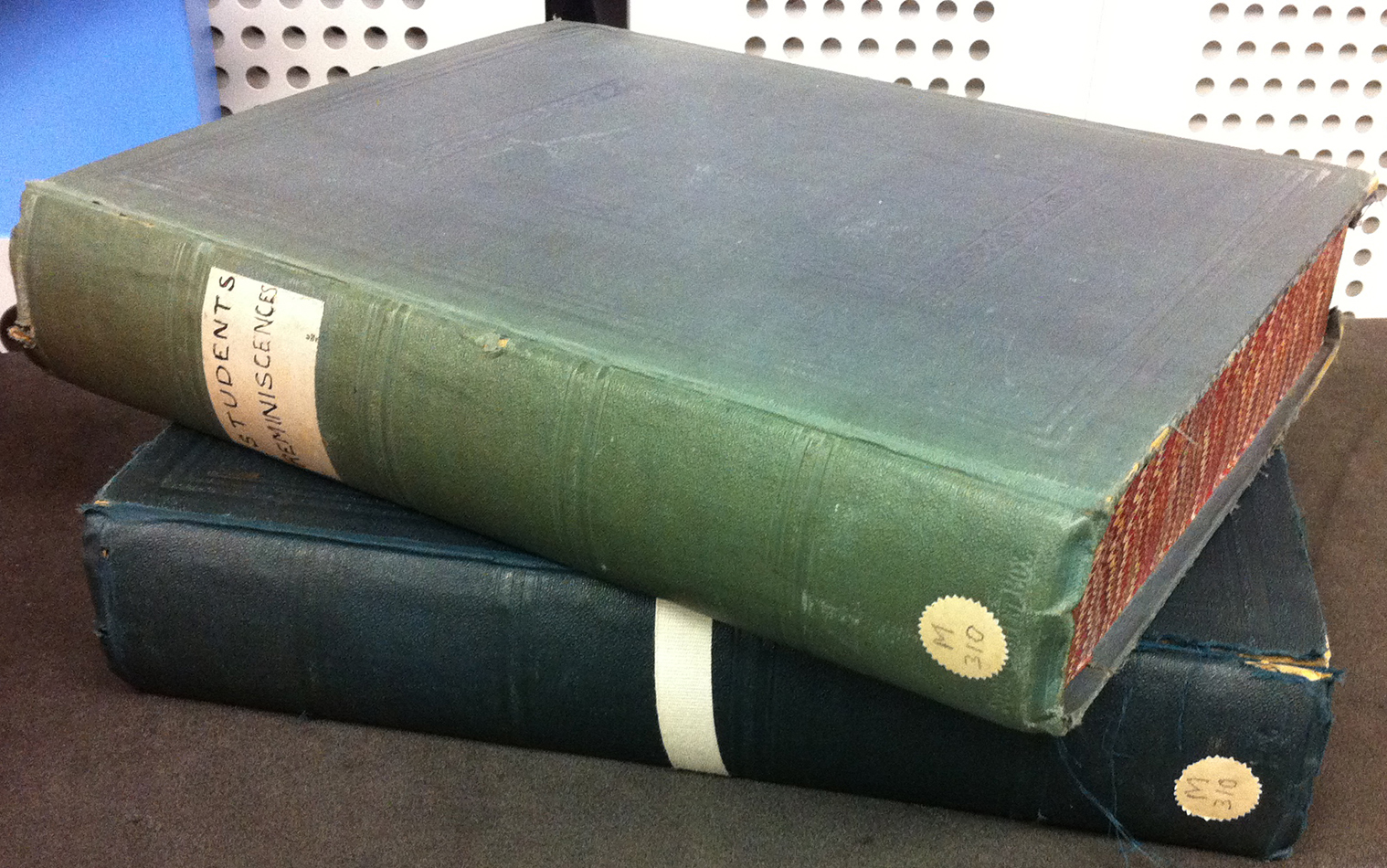
I have been reading through two box files of memories of student life at St Andrews collected by Professor Peter Redford Scott Lang in the 1920s for this week’s post. I wanted to find out whether they do indeed provide a unique viewpoint and extra colour to supplement the administrative record preserved within the Muniment Collection.
Scott Lang was passionately interested in student traditions (see also msLF1110.L2) and the ‘student experience’, truly a man ahead of his time! He wrote in 1925 to alumni of all ages, asking them to send him their reminiscences of their student days, typescripts of which I have been reading. They cover an amazing time span of student life – from 1843 to 1923. In fact, one of them contains family stories passed down from father to son, and so goes back as far as 1825. His daughter considered the contents sensitive enough to require the original box to be closed until 1965.
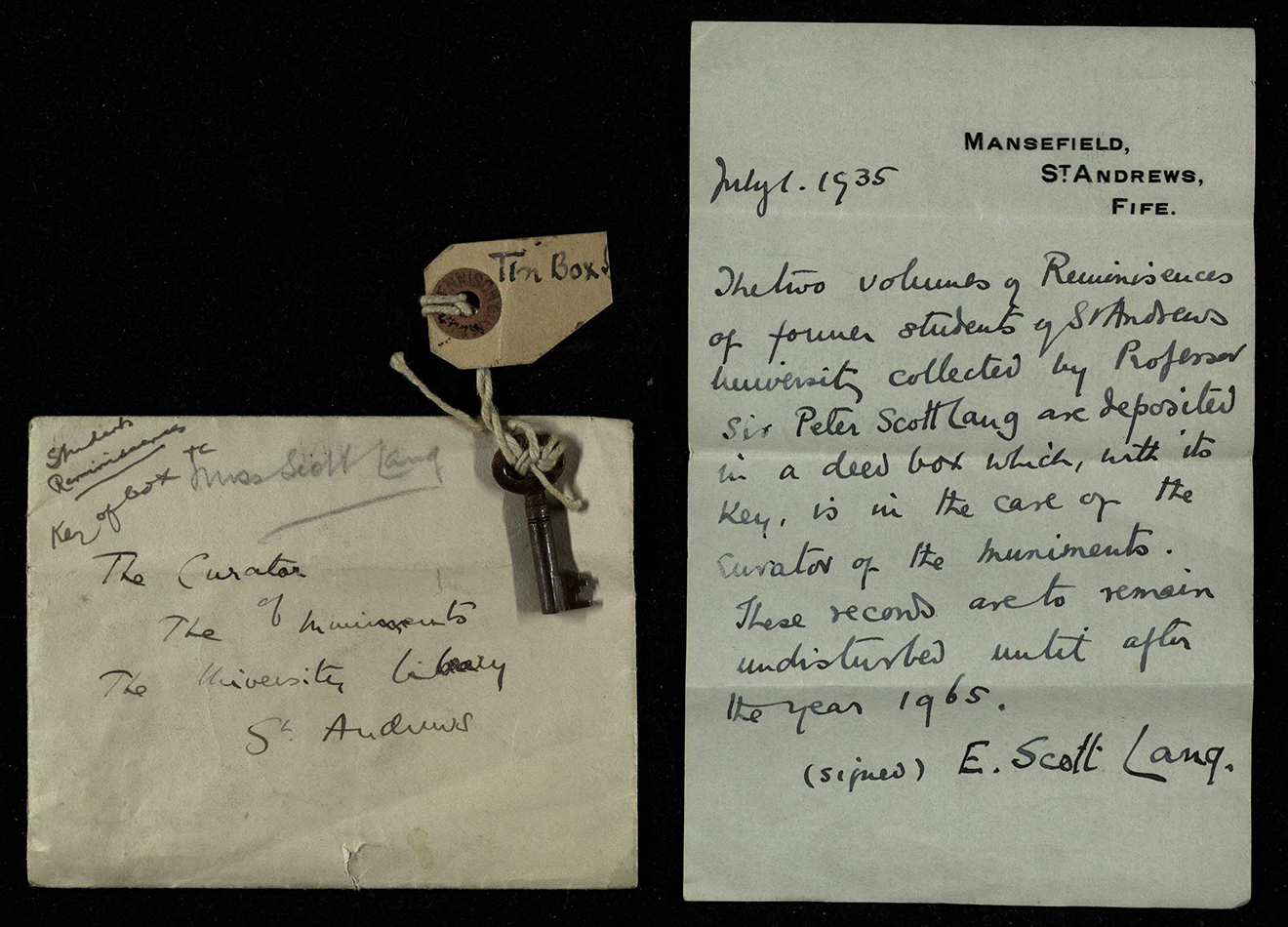
The reminiscences are generally fairly similar, shaped by the wording of Scott Lang’s request that they might reflect on their course and teachers, their fellow students, and memorable incidents. So we find a rich record of eye-witness accounts of public events from the nineteenth century, such as early Kate Kennedy celebrations and rectorial elections along with descriptions of student lodgings, politics and societies, teachers and curriculum, buildings, sports and pranks.
As I read affectionate descriptions of outstanding academics, I kept coming across stories with slight variations about Thomas Duncan, Professor of Mathematics. So, since I knew little about Duncan, I thought I would try to see just how much of a personal nature I could glean about the man from the box files. But first I would do the standard digging in the archives to see what could be established from the ‘normal’ sources, and then compare the two.
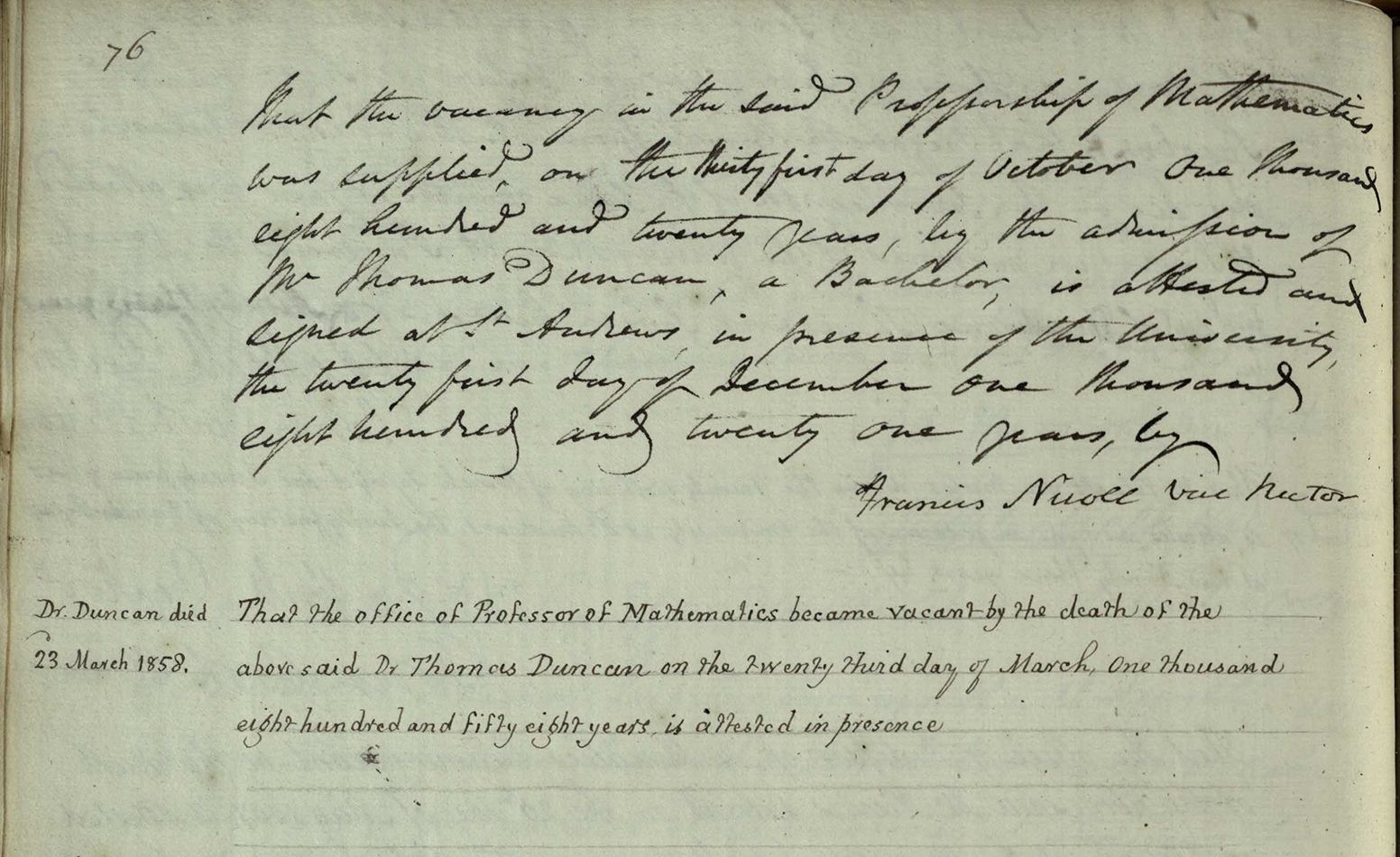
From Bob Smart’s Biographical Register of the University of St Andrews, 1747-1897 (St Andrews, 2004) Ref LF1108.S6, I discovered that Duncan was baptised in 1777 and had himself been a student at the United College from 1791, being awarded an MA on 29 April 1795. Thereafter he studied in St Mary’s (1795-99), where he was an Exchequer bursar. He acted as Assistant to the Professor of Maths 1798-1802 before being appointed Rector of Dundee Academy (1802-1819), one of the antecedents of the High School of Dundee. His reputation as a teacher still survives as a tradition in Dundee. He held the Regius Chair of Mathematics at St Andrews from 1820 until his death in March 1858.
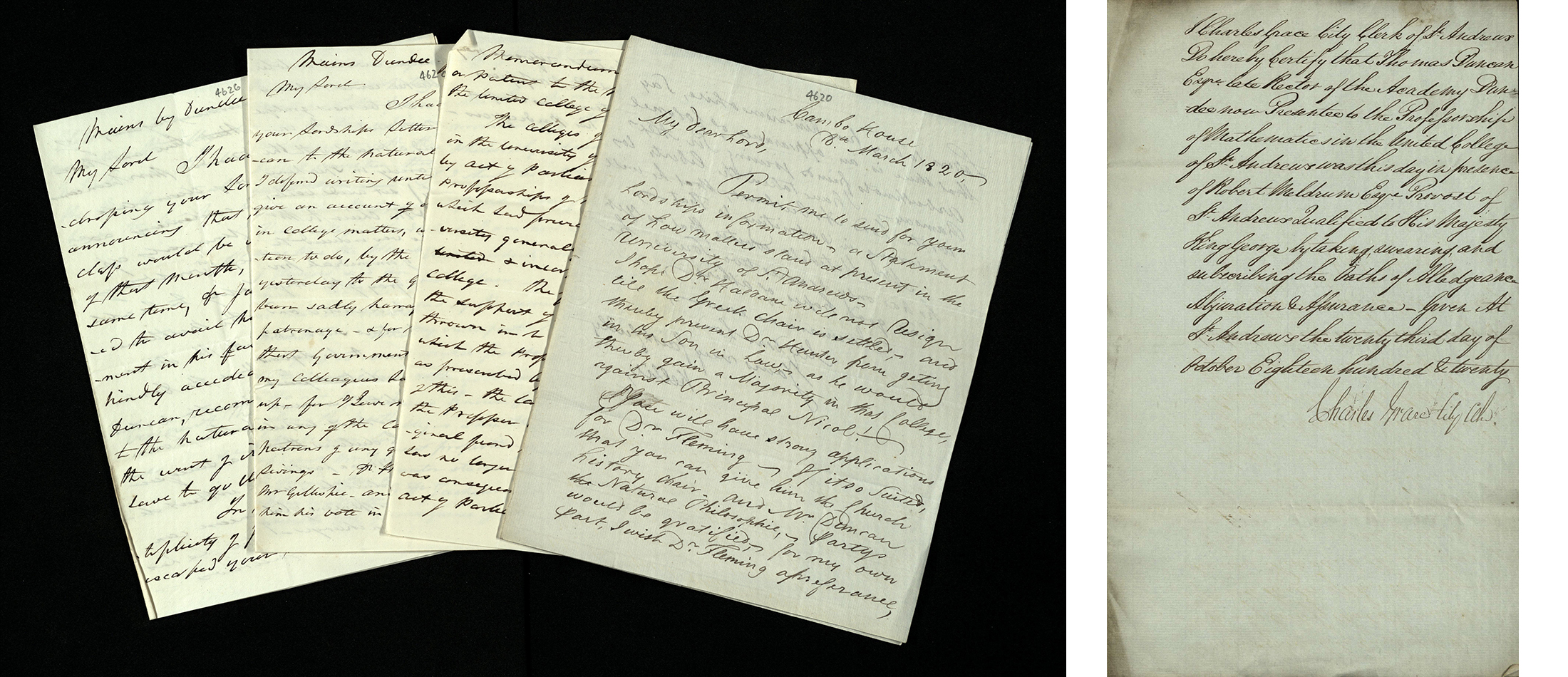
I was also able to find more records than I had expected: a class certificate he wrote out and signed in 1825, a notebook of his lectures attended by William Carmichael McIntosh, and best of all, two photographs of the man himself.
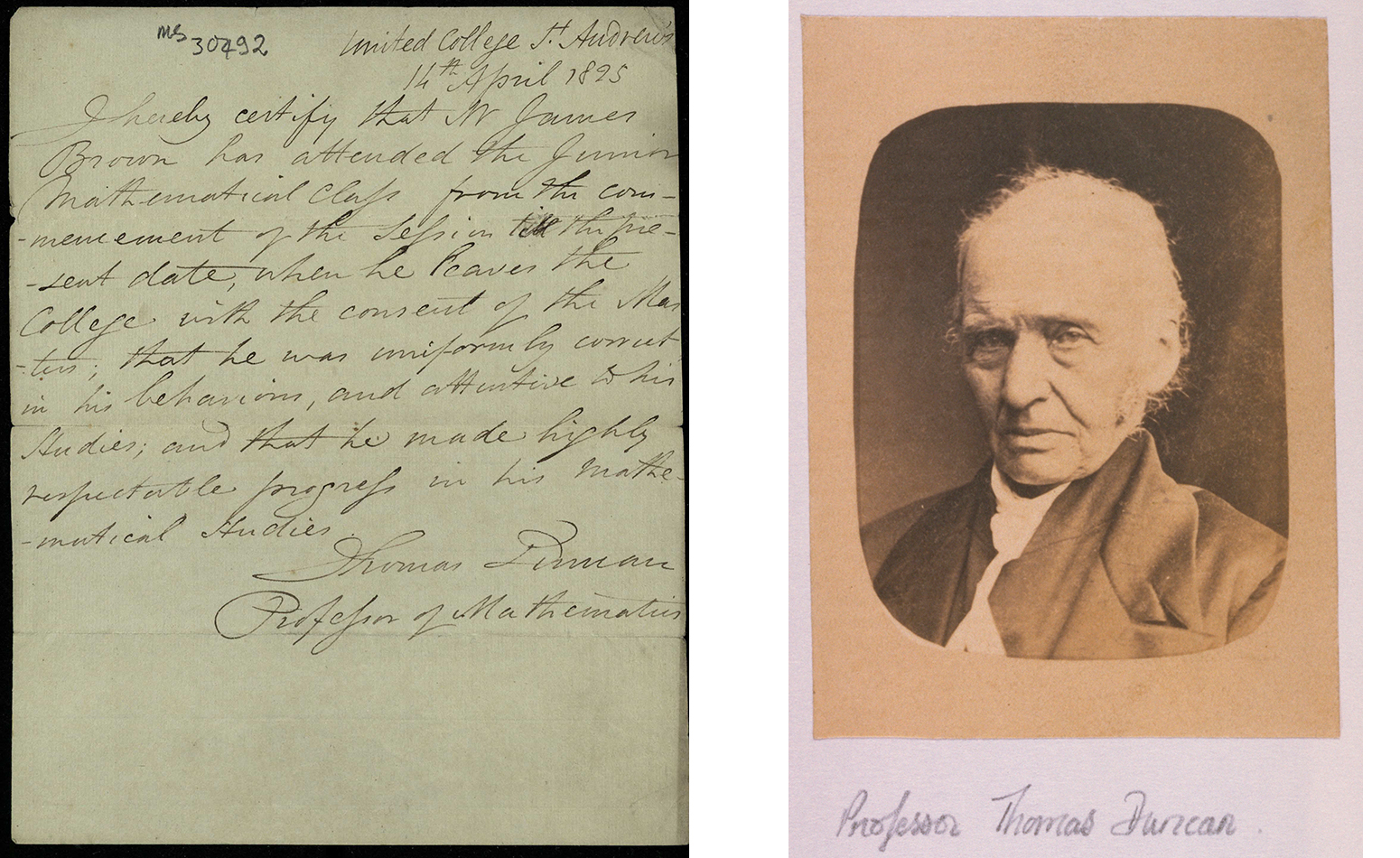
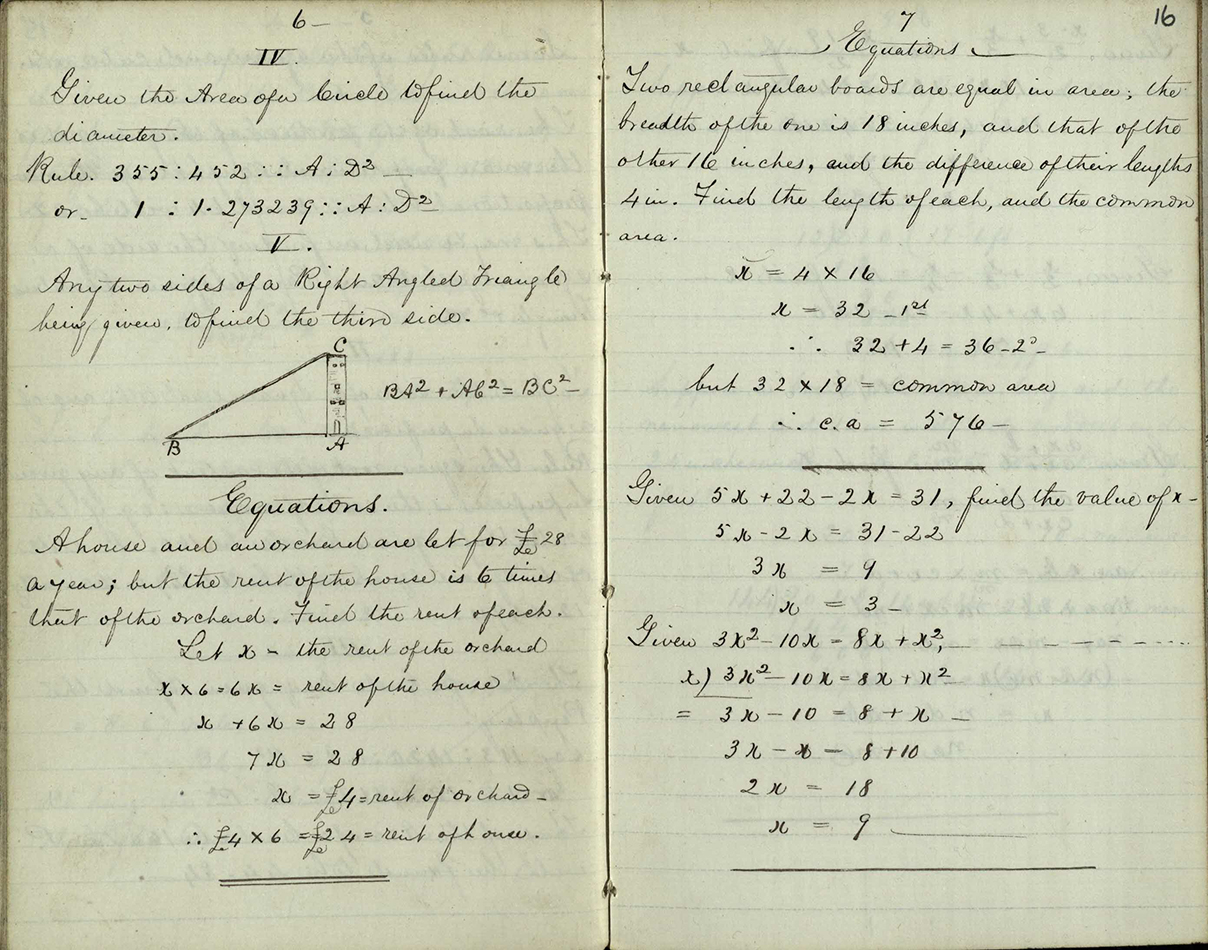
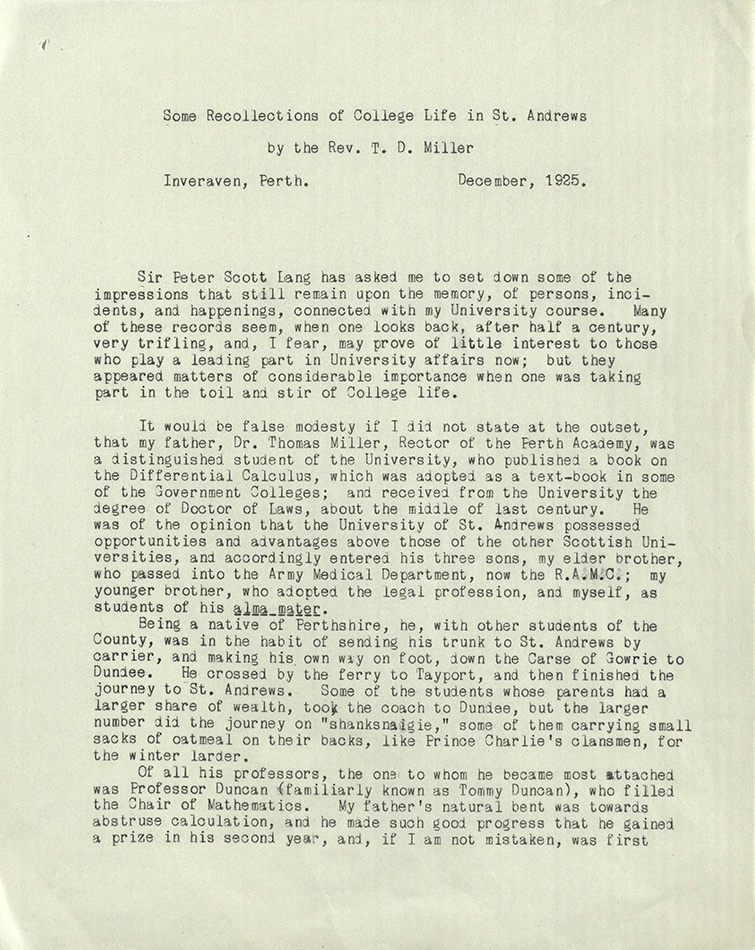
So, armed with quite a lot of information already, what more might I find from the student reminiscences? The one which really set me on the trail was written by Revd Thomas Duncan Miller in Perth in 1925, one of three brothers who attended St Andrews between 1865-79, his father being of the opinion that “the University of St Andrews possessed opportunities and advantages above those of the other Scottish Universities.” In it he explained how he got his names, and referred back to his father, Dr Thomas Miller (1807-91), who had been a student in St Andrews 1825-33, and Rector of the Perth Academy.
“My father was visited occasionally by his old teacher, Professor Duncan, and showed his affection for him by naming one of his sons after him, and I was frequently told how the good man came from St Andrews after the baptism, took me in his arms and gave me his blessing.” What a tribute to a beloved teacher!
David Pryde gives more prosaic detail about ‘Tammy’ Duncan’s appearance and voice:
till the very last he looked a poor farmer, dressed in his Sunday suit to dine with his landlord. He was awkward, bashful, had a broad Scottish accent, talked about the “theodoleet” and about ‘mathematics having treasures richer than the mines o’ goold i’ the booels o’ the airth,’ and invariably asked students fresh from the country, at the beginning of the session, ‘hoo the pitaties were getting’ on?” Let me call him up as I used to see him, coming out of his door in South Street a few minutes before 10 am. A big, raw-boned figure in shabby black, looking ill at ease in a public thorough fare …
You can read the rest here:
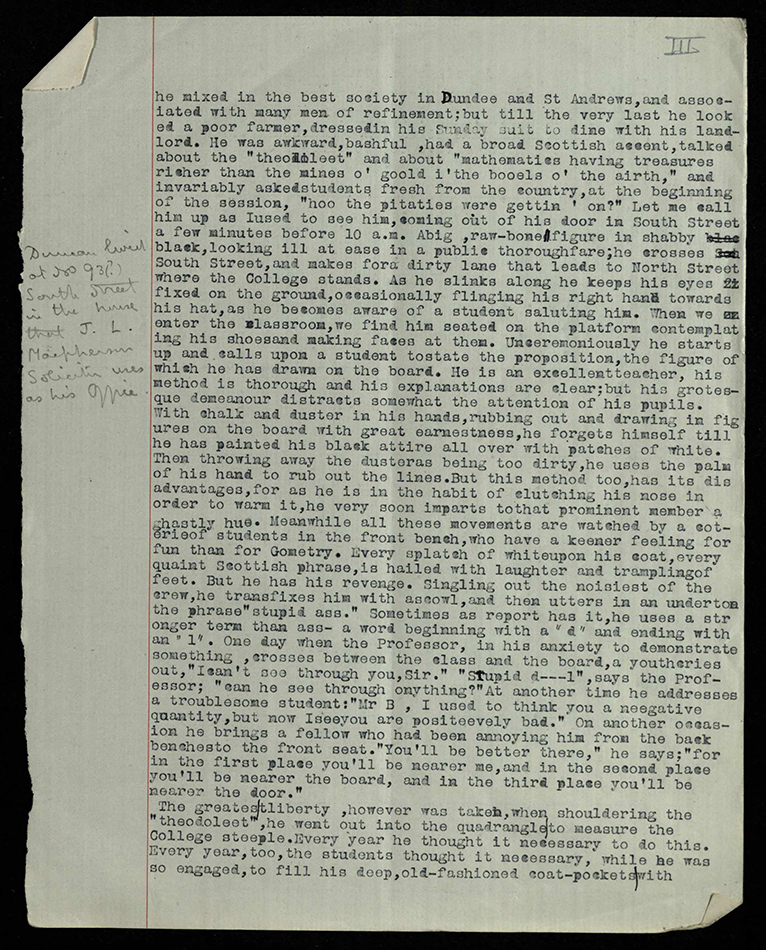
Students even wrote poems about Duncan, such as this one from UYM310/Pryde/IV:
Lo ‘ Tammy comes, with his broad Scotch drawls,
And his faces so funny and plastic,
That the Gorgons’ heads on the College walls
Don’t look half so fantastic.
From the circle of fashion he’s far remote.
As his clothes and his looks declare, sir,
With chalk on his features and chalk on his coat
And chalk every here and there, sir.
From Dr Gray we learn that Duncan was popular with his students and was said to have been declared to be ‘the best specimen of the natural man I ever knew’ by his contemporary Thomas Chalmers. He was a bachelor, simple in his habits and had a dog which he brought to class and which usually curled up on the Professor’s chair (UYM310/Gray/IX) Thomas Whitelaw had vivid memory of Duncan who, “besides being a distinguished teacher of his science, was a remarkable personality, possessed of a large vein of Scottish wit and humour, shrewd and pawky which he sometimes exercised at the expense of his students, especially when they tried to be troublesome and make game of him” (UYM310/Whitelaw/59).
But perhaps the best anecdote (which starts halfway down the page), and one which could never be found in the formal administrative record comes from Thomas Wilson, who was a student from 1848-52, and recounts how the professor almost didn’t remain a bachelor.
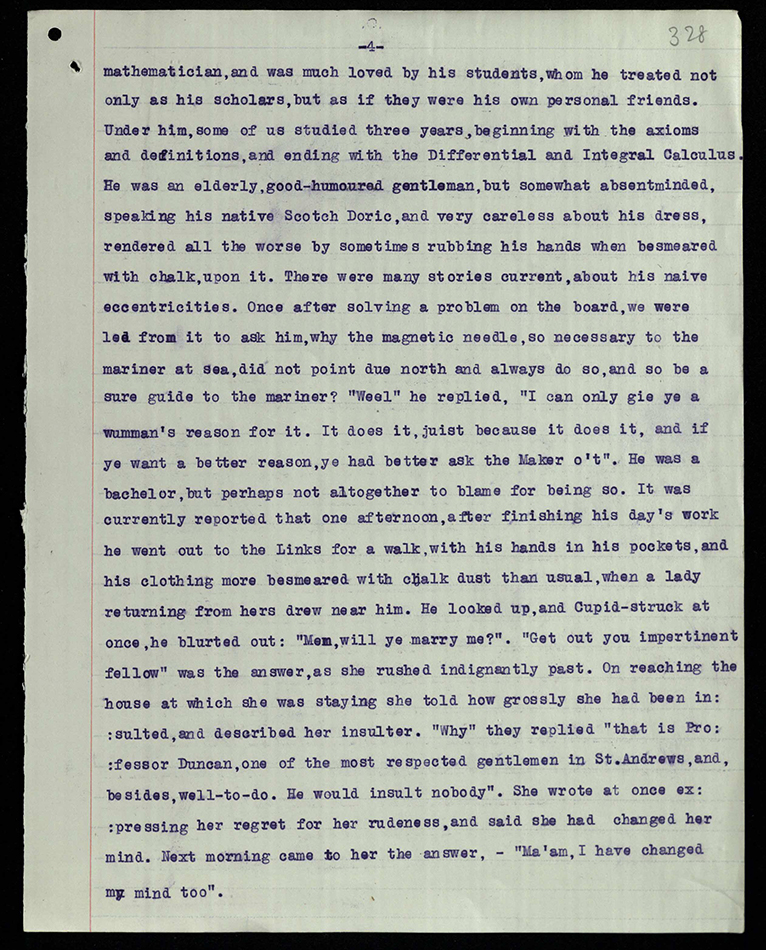
For stories like this, there is no substitute for the personal recollection and it is my pleasure to continue to receive student reminiscence for the archives today.
RH